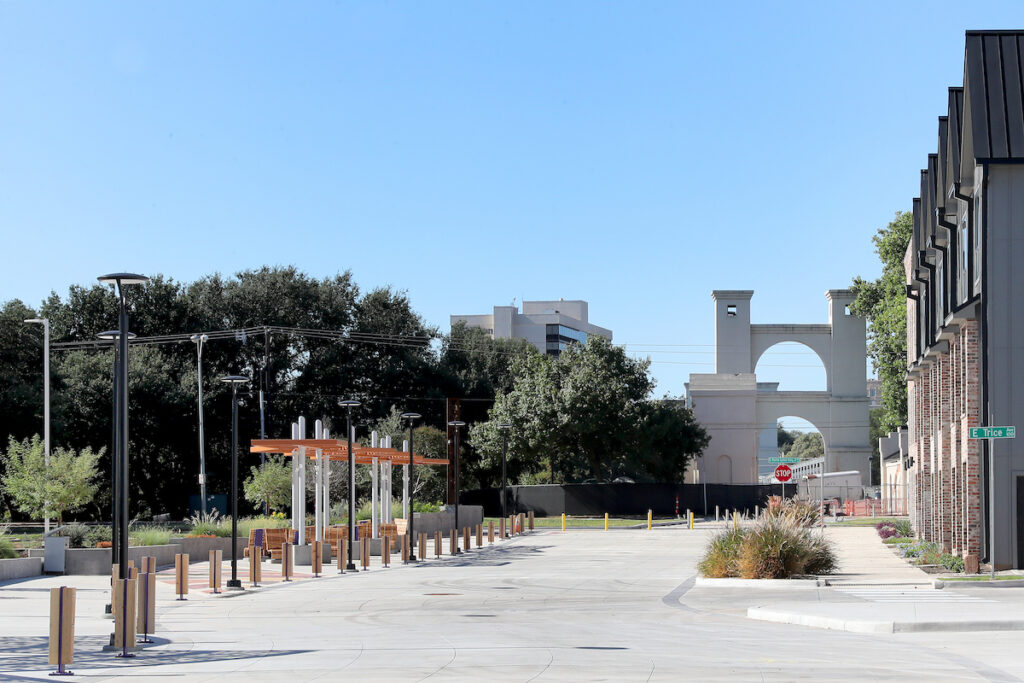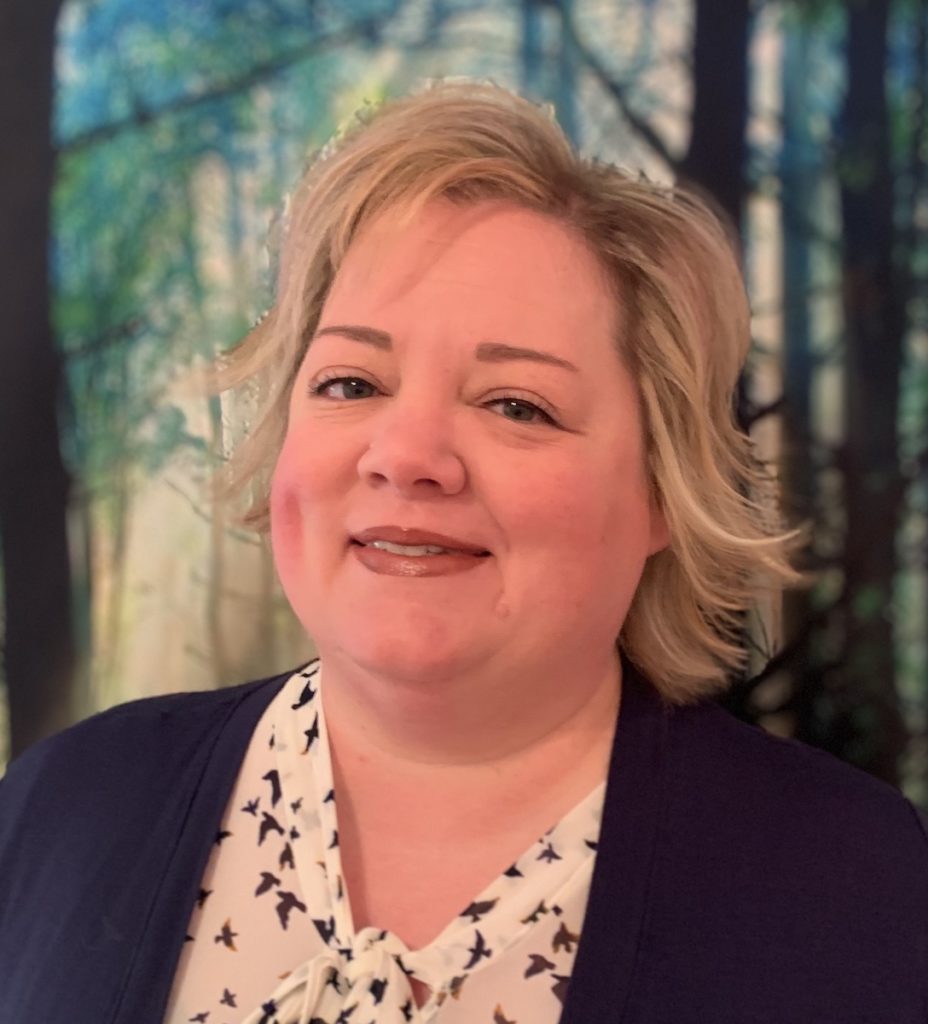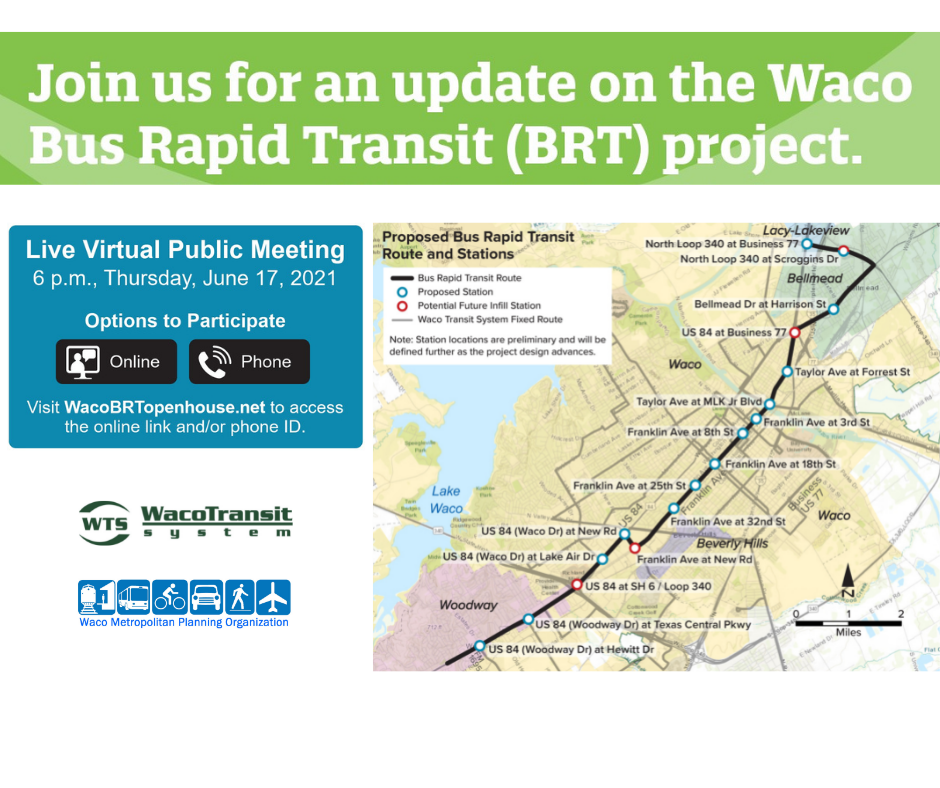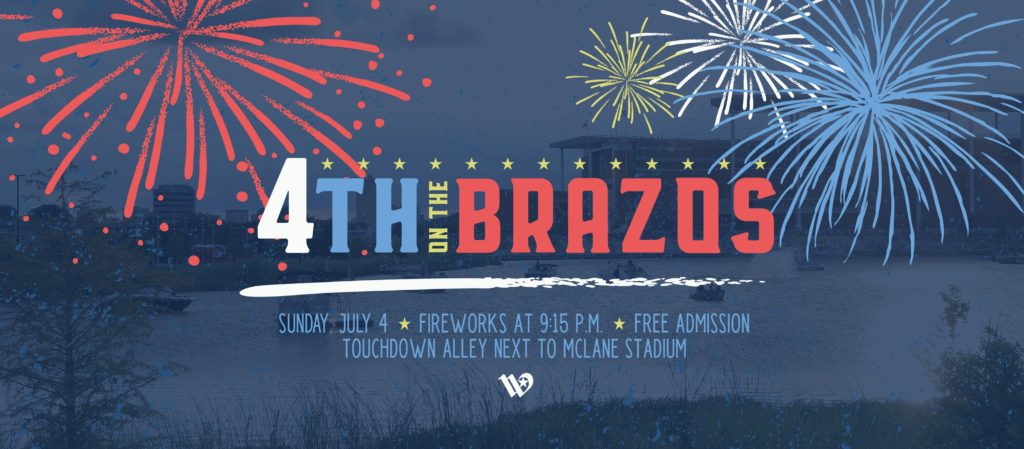By Natalie Galindo
Join the City of Waco as we celebrate the first big event at the newly opened Bridge Street Plaza 3-7 p.m. Sunday, Dec. 19, with live performances beginning at 5 p.m. This family-friendly event will feature live music, local food trucks, vendors, arts and crafts, Skate Waco mobile unit, and much more.

This plaza was built with the talent and entrepreneurship of the East Waco community in mind, and thus most of our performers and vendors are from East Waco or have ties to it.
Due to construction on Elm Avenue, access to the plaza will be via Taylor Avenue. We are asking the public to park in designated parking lots along Taylor. These lots include the TFNB (715 Elm), Elm Ave Community Clinic (609 Elm), and City Center Waco (801 Elm).
Parking signage will be deployed to direct people, and a shuttle service will be available for those who have to park blocks from the plaza.
East Side Market at Brotherwell Brewing will be occurring on the same day. So, we are excited about the concentration of activity in the Elm corridor on that day.
City Center Waco is a nonprofit agency that serves as a bridge between community and development in
downtown and the surrounding neighborhoods.
Natalie Galindo is public information communications specialist with the City of Waco.
The Act Locally Waco blog publishes posts with a connection to these aspirations for Waco. If you are interested in writing for the Act Locally Waco Blog, please email the ALW team — [email protected].
The City of Waco is pleased to announce three organizational updates: the selection of Monica Sedelmeier as director of communications and marketing, promotion of Kent George to director of economic development, and placement of Dan Quandt as interim director of conventions and tourism.
Sedelmeier will join the City in mid-December in the communications and marketing role (formerly municipal information). Most recently, she worked as chief marketing and quality officer for a healthcare system in Iowa. She brings prior experience from Houston ISD and Rice University. Sedelmeier holds a bachelor’s degree in business and marketing, as well as a master’s in business administration.
George was promoted at the beginning of November. He joined the City in 2018 as an economic development manager. He has more than 18 years of experience in local government, as well as prior experience in the private sector. George holds a bachelor’s degree in business. Throughout his tenure with the City, George has worked on some of Waco’s largest economic development projects to date, including the Marriott AC Hotel, the Riverfront Development, Cottonwood Creek Marketplace, and many industrial projects.
The City worked with SGR to locate and contract with an interim conventions and tourism director. Quandt, a 38-year veteran CVB director, joined the City of Waco Nov. 8. Quandt most recently served as senior vice president of the Amarillo Convention and Visitors Council for the Amarillo Chamber of Commerce. He is also a past chairman of the board for the Texas Association of Convention and Visitors Bureaus and has served as a member of the board of directors for the Texas Travel Industry Association.
Waco City Manager Bradley Ford said: “I am excited to announce the selection of these three individuals for key leadership roles within our organization. Monica brings expertise in both communications and marketing along with strengths in strategic planning and change management, which will be crucial as we look to grow our Communications and Marketing team. The work our Municipal Information team produces is excellent, and we will look to Monica to build upon that team as we implement our strategic communications plan. Kent has worked on many exciting and innovative projects in his time here in Waco. I look forward to the work he will continue to accomplish leading the City’s Economic Development team, including the creation of the City’s new economic development strategic plan. I am thankful we were able to bring Dan on to lead the Conventions and Tourism team in this interim period as we evaluate the Director position posting and the industry market. The experience he brings from the travel and tourism sector is invaluable.”
The Act Locally Waco blog publishes posts with a connection to these aspirations for Waco. If you are interested in writing for the Act Locally Waco Blog, please email Ferrell Foster.
By the City of Waco
Fall is severe weather season in Central Texas. Stay informed by signing up for free emergency notification by visiting the Heart of Texas Council of Governments website.
HOTCOG, along with Bosque, Hill, Falls, Freestone, Limestone, and McLennan counties, is proud to offer this service to the public at no cost.
This emergency alert system gives local emergency management, public safety, and governmental jurisdictions a chance to inform you directly in case of an emergency incident or public threat. This phone and email system is designed to provide direct emergency messages to the public, quickly and effectively.
Types of events that you may receive messages about are:
- Natural disasters such as fires, floods, tornado warnings, and other severe weather
- Man-made disasters such as bomb threats, hazardous material incidents, or terrorism threats
- Evacuation notices and criminal threats
- Boil water notices or water outages, or
- Public health threats
Sign up with accurate contact information to ensure you can be contacted when emergency messages are sent by your local officials. You will receive time-sensitive messages wherever you specify, such as your home, mobile or business phones, email address, text messages, and more. The provided information will only be used for our emergency notification system and will not be used or released to others.
The Act Locally Waco blog publishes posts with a connection to these aspirations for Waco. If you are interested in writing for the Act Locally Waco Blog, please email Ferrell Foster at [email protected].
By Telawna Kirbie
The City of Waco now has a full-time social worker, DeAngela Bynum, at the Waco Police Department and employed by Prosper Waco. The goal of her work is to connect community members to much-needed social resources and supports as part of PW’s Waco Connect program.

Obviously, one person cannot do this for the entire community, so Prosper Waco has worked with police to choose a particular set of community individuals who will be offered Waco Connect services as a pilot program. This population includes community members who have multiple law enforcement interactions and those that have frequent Emergency Detention Orders (EDOs).
When we say, “multiple law enforcement contacts,” we are referring to those community members for which the police receive multiple calls for minor disturbances and infractions that may or may not warrant police intervention. Some people are the subject of multiple calls in one day and others over a period of weeks or months. These community members may benefit from accessing other social resources to support their overall physical and mental health.
The other subset of the population includes those who have multiple or frequent EDOs. An EDO is when a community member is in a mental health crisis and needs assessment for hospitalization but is not willing or able to go voluntarily. The police have the authority to take the individual into custody and take them to a facility to obtain a psychiatric assessment. Some of our community members find themselves in mental health crises frequently. Waco Connect will work with them to access the resources and supports necessary to reduce mental health crises and promote mental health.
DeAngela receives referrals from within the police department, completes a needs assessment, and then provides linkage and support in accessing, navigating, and obtaining the resources to help meet their needs. Waco Connect can continue to provide ongoing support for as long as needed for up to one year. The desired overall outcomes will be a reduction in law enforcement contacts, EDOs, emergency department visits, hospitalizations, and medical costs as well as an increased level of overall physical and mental health.
Prosper Waco, the City, and the Waco Police Department are excited about what this program can provide as we partner together to provide more comprehensive support for our community members. Stay tuned for more information as we continue to grow and expand Waco Connect services.

Telawna Kirbie is director of behavioral health initiatives for Prosper Waco.
The Act Locally Waco blog publishes posts with a connection to these aspirations for Waco. If you are interested in writing for the Act Locally Waco Blog, please email Ferrell Foster at [email protected].
The City of Waco is receiving $34.7 million in federal COVID relief funds, and city leaders want community input on how to spend a portion of the funds.
Waco received $17.4 million in June from the American Rescue Plan and will receive a second payment next year for a total of $34.7 million.
“The City of Waco intends to use $15 million … for municipal purposes including improvements to infrastructure for Water, Wastewater, and WMARSS as well as for other infrastructure resiliency and backup projects,” says the City’s website.
The city plan also has set aside $17 million to provide direct assistance to households and businesses. The exact use of these funds will be determined based on community feedback using the Balancing Act Tool.
Council Member Kelly Palmer said: “The data collected from the tool will shape how we invest these funds in our communities. … The city will be gathering this data through the end of September.”
English Balancing Act Tool
Spanish Balancing Act Tool
The Balancing Act Tool allows you to allocate the $17 million to various categories of funding utilizing the available funds set aside for these purposes. “If you do not see any area in simulator, please add in your suggestions.”
The American Rescue Plan Act is the $1.9 trillion act signed into law March 11 by President Biden. The Act contained direct relief to citizens, including the $1,400 stimulus checks received earlier this year, and $350 billion for eligible state, local, territorial, and tribal governments to mitigate the fiscal effects stemming from the public health emergency created by the spread of COVID-19. This latter portion is providing the funds now available to Waco.
From the City of Waco Public Information Office
The Texas Historical Commission presented a THC Preservation Award of Merit to the First Street Cemetery Memorial Advisory Committee during the City of Waco Council Meeting Tuesday, Aug. 3.
The First Street Cemetery committee members Annette Jones (retired, City of Waco assistant city attorney), Nesta Anderson (archaeologist, principal investigator), and Melanie Nichols (archaeologist) were granted the Award of Merit for their significant contributions in historic preservation and public outreach through documentation of the First Street Cemetery project. Formal presentation of the award was postponed due to the COVID-19 pandemic.
The First Street Cemetery, the oldest public cemetery in Waco, is south of the Brazos River and east of Interstate 35. After the 1960s construction of I-35, the City developed plans for a Texas Ranger Museum and campground, and a court order was issued in 1968 to disinter human remains within the proposed construction space to another portion of the cemetery.
However, in 2007, during construction of the Texas Ranger Company Headquarters building, it was discovered that human remains were still located in the area covered by the 1968 court order. As a result, the City, the National Park Service, THC, and the Advisory Council on Historic Preservation executed a Memorandum of Agreement for the mitigation of adverse impacts to historical property and to remove the land use restrictions.
The Committee, consisting of sixteen community members, served between 2013 and 2018; it was formed and tasked with making recommendations to the City Council on the reburial of the remains, appropriate memorial services, plaques, and memorials to be erected at First Street and the reburial site. The Committee carefully took into consideration the community’s input and consistently provided thoughtful feedback for the many decisions to be made regarding reburials.
The THC and the City of Waco recognize the commitment of the Committee and these additional individuals to ensure a positive outcome for the impacts at First Street Cemetery and commend the example they provide for future cemetery projects.
The THC’s Award of Merit recognizes the efforts and/or contributions of an individual or organization involved in preserving Texas’ cultural and historical resources. This award recognizes the efforts and/or contributions of an individual or organization involved in preserving Texas’ cultural and historical resources.
The Act Locally Waco blog publishes posts with a connection to these aspirations for Waco. If you are interested in writing for the Act Locally Waco Blog, please email Ferrell Foster at [email protected].
By City of Waco staff
The City of Waco, Lions Park Trust Board, and many community partners are pleased to announce the revitalization of Waco’s beloved treasure, Lions Park, at 1716 N. 42nd St. John Tipton, immediate past president of the Waco Founder Lion’s Club and a member of the Lions Park Trust Board, said they are interested in a larger partnership that will allow for planning, revitalization, and most importantly, a continuation of this special park venue for children.
“We are grateful for our patrons, volunteers, and the entire community’s support of Lions Park over the years and look forward to the next phase in partnership with the City of Waco and other community organizations. The future of Lions Park is bright,” said Tipton.
According to City Manager Bradley Ford, while the park will temporarily close to undergo a strategic planning and rebuilding process, the City of Waco anticipates committing $2 million to ensure the brightest future for Lions Park.
Lions Park was established in 1952 by the Waco Lions as a unique and popular place for children. Volunteers and community organizations, such as the Junior League of Waco, have donated hundreds of hours and resources to the park.
“Lions Park is a unique place for families to gather, and I’m excited we have the opportunity to reimagine this park so it continues to be the community asset it has been for nearly 70 years,” said Mayor Dillon Meek. “Our community remains deeply grateful to the Waco Lions for building and maintaining this unique family treasure over the years. I also want to assure the children of Waco that while adults will be involved in the planning process, we will certainly include our young people for help with the design and amenity selection. After all, this park is for the children of our community.”
In 2018, Waco Foundation convened a group of partners interested in the park and ultimately commissioned a survey receiving more than 2,000 responses. Results of the survey were overwhelmingly positive when asked about the park’s value to the community. Additionally, many indicated a desire to support the park by donating time, money, and input.
“The survey allowed us to better understand how the community feels about Lions Park,” said McLennan County Judge Scott Felton. “It is crystal clear that the park is not only a valued place for entertainment but a true gathering spot for families across Waco that spans generations. I am just one of many grandfathers who brought my children and grandchildren to the park for a one-of-a-kind experience in McLennan County. Now we have the chance to revitalize this community asset to make sure Wacoans now and into the future will be able to enjoy everything it has to offer.”
Activities at the nearby BASE facility will complement the park and enhance visitor and resident experience. Wes Allison, president and CEO of Heart O’ Texas Fair and Rodeo, is interested in the future of the park, as well. “As our neighboring campus continues to expand with new facilities like the BASE at Extraco Events Center, it is really helpful to know how important Lions Park is to our community. The HOT Fair & Rodeo has wide-ranging experience with family entertainment and attractions, and so we will look for ways to partner and provide our expertise in future plans.”
The immediate future of Lions Park includes continued meetings of community partners, site plans, and community fundraising. All plans will be designed to preserve the Waco Lions’ intent and the final project will remain affordable and relevant for Waco families.
Community members interested in learning more, receiving updates, and potentially contributing to the future of the park should sign up for updates at lionsparkwaco.com.
Community partners that participated in initial convening:
- Waco Lions International
- Waco Foundation
- Heart of Texas Fair and Rodeo
- Junior League of Waco
- McLennan County
- City of Waco
- Waco City Council
- United Waco
- Waco City Council
- United Way of Waco-McLennan County
- Rotary Club of Waco
- Baylor University
- Waco Parks and Recreation
By Serena M. Stevenson
Waco Transit System (WTS) is set to complete the preliminary engineering and environmental review process for the proposed 13-mile Bus Rapid Transit (BRT) project. Completing this process advances the development of Waco’s first BRT project to provide safe, reliable, and efficient transit service.

Over the last 10 months, WTS and its consultant have been refining the BRT station design and conducting evaluations to confirm the location for 14 proposed BRT stations. As part of this process, WTS continues to seek public input to help inform the project.
Community members are invited to participate in a live virtual public meeting that will be held at 6 p.m. Thursday, June 17, to learn about the BRT project and share feedback. During this meeting the project team will present the final recommendations for the station locations, provide an update on the station design, and share details about next steps.
In light of restrictions on public gatherings, this public meeting is being offered online and via phone, rather than in-person. Visit WacoBRTopenhouse.net to access the online link and/or phone ID.
The information that will be presented during this live virtual meeting and a recording of the meeting will be made available online at WacoBRTopenhouse.net.
Community members interested in providing feedback to help inform the BRT project are encouraged to call the project comment line at 844-922-6278; email the project at [email protected]; and/or complete the online feedback form available at wacobrtopenhouse.net/feedback. The public comment period for this phase of this project will close Friday, July 2.
About the Waco BRT Project: The proposed 13-mile BRT project that is in development would provide buses every 15-minutes during peak service hours, including extended service hours to 10 p.m. and service on Sundays to offer safe, reliable, and efficient transit service. The purpose for implementing BRT service in Waco is to offer residents enhanced mobility and to provide improved access to jobs, medical and social services, and educational facilities. The proposed BRT route would also provide better and more efficient transfers to other routes operated by Waco Transit System. The BRT project is now at the next phase in the development process which involves preliminary engineering and an environmental review pursuant to the National Environmental Policy Act. For more information about the Waco BRT project, visit the project webpage at waco-texas.com/transit/BRT.

Serena M. Stevenson is general manager of Waco Transit System.
The Act Locally Waco blog publishes posts with a connection to these aspirations for Waco. If you are interested in writing for the Act Locally Waco Blog, please email Ferrell Foster at [email protected].
By Megan Davis
The City of Waco’s annual “4th on the Brazos” celebration is set to return Sunday, July 4, at Touchdown Alley, next to Baylor University’s McLane Stadium. Admission is free, and the community is invited to enjoy the festivities with food trucks, live music, family fun, and fireworks.

Gates will open at 6 p.m., and the fireworks will kick off at about 9:15 p.m. The fireworks will be shot above the river, between Touchdown Alley and the Ferrell Center. They will be visible from both sides of the river, the Ferrell Center, and areas around Baylor campus.
Bag check stations will be located at all entrances. Coolers with drinks and snacks are allowed, but glass bottles and containers are prohibited. Extra hand washing stations will be located throughout the grounds, and guests are encouraged to practice social distancing.
Additional details, including an event schedule and artist announcement, will be available soon. For updates, visit brazosnightswaco.com or follow Brazos Nights on Facebook or Instagram.
Megan Davis works the City of Waco’s Parks and Recreation Department.
The Act Locally Waco blog publishes posts with a connection to these aspirations for Waco. If you are interested in writing for the Act Locally Waco Blog, please email Ferrell Foster at [email protected].
Drinking Water Week offers consumers an opportunity to recognize the hardworking people performing various roles ensuring tap water is “There When You Need It.” Drinking Water Week is May 2-8.

The City of Waco and partners throughout North America are observing Drinking Water Week by recognizing the vital role tap water plays in daily life, the infrastructure that is required to carry it to and from homes and businesses, and the important work of water professionals “behind the scenes.”
The City of Waco Water Utility Services Department’s staff of 150 water professionals is proud to serve the Waco community, ensuring the continuous delivery of safe, high quality drinking water to all customers.
Whether an engineer designing a capital project, an operator ensuring the safety and quality of drinking water, or a member of a pipe crew maintaining the infrastructure in our community, water professionals work around the clock to ensure tap water is there when you need it.
“The coronavirus pandemic continues to make evident the hard work performed by the people in the water sector,” said American Water Works Association CEO David LaFrance. “The work they are performing throughout the pandemic, often sacrificing time with their family, is nothing short of heroic. I am proud to be associated with them.”
“Throughout the pandemic, I’ve been proud of our employees here at the City of Waco,” said City Manager, Bradley Ford. “Particularly during the recent winter storm, Water Utility Services staff did an incredible job, working day and night in extreme circumstances, to keep our water system functioning. That work will be remembered for years to come.”
To commemorate the week, water utilities, water organizations, government entities, environmental advocates, schools, and others throughout North America and beyond encourage consumers to learn more about the importance of water and water infrastructure, especially in times of crisis.
About Drinking Water Week
For several decades, AWWA and its members have celebrated Drinking Water Week, a unique opportunity for both water professionals and the communities they serve to join in recognizing the vital role water plays in daily lives. Free materials for download and additional information about Drinking Water Week are available on the Drinking Water Week webpage.
